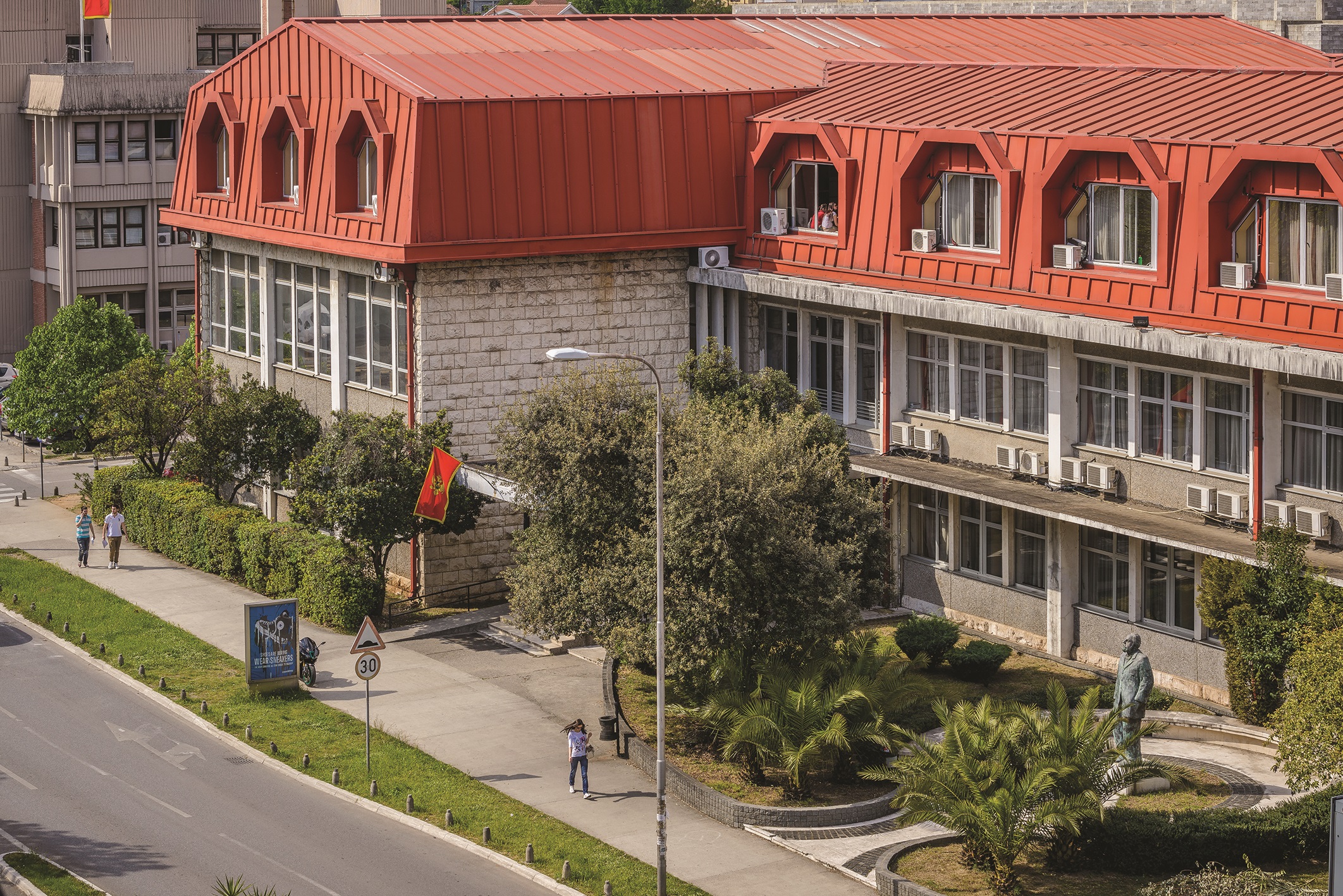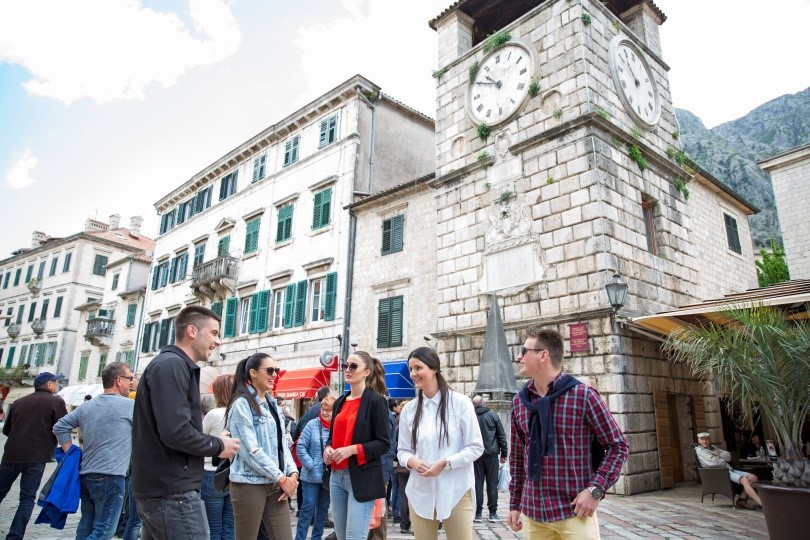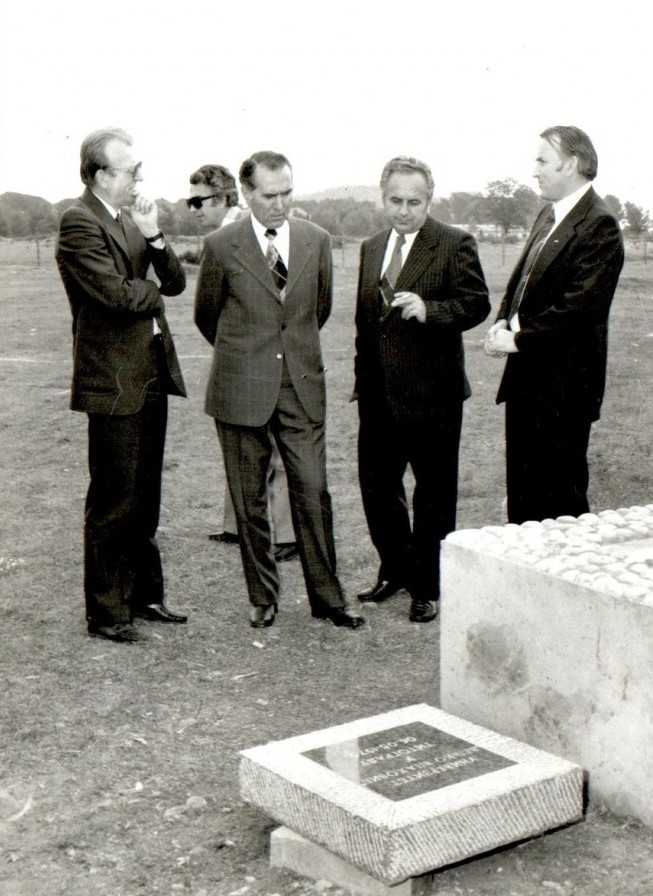Background Information
The University of Montenegro was founded in 1974 and is the oldest institution of higher education in Montenegro. It has 19 faculties and three institutes, with an academic community of about 17,000 active students at all levels of study, and more than 1,000 academic, professional and other staff. Since 2004, classes at the University of Montenegro have been organized in accordance with the principles of the Bologna Declaration.
UNIVERSITY TODAY
Today, the UNIVERSITY OF MONTENEGRO is an intellectual development of Montenegro - the center of scientific research, cultural, artistic and innovative creativity. It is the oldest and at the same time the only state university in  Montenegro. It is the most comprehensive higher education institution that provides education in the fields of social sciences, humanities, as well as technological, natural and medical sciences. Classes are organized in accordance with the curricula of reputable universities in the European Higher Education Area, which, along with numerous agreements and programs, enables unhindered mobility for students, teachers and administrative staff. The studies are implemented in three cycles, undergraduate, master and doctoral studies. The model according to which they are implemented is 3 + 2 + 3, which means that undergraduate studies last for three academic years, with exception of regulated professions and teacher education that lasts for five or six years. Postgraduate master studies last two, and doctoral three academic years. In undergraduate and master studies, candidates are enrolled at the expense of the State Budget. The University of Montenegro is also a leading scientific research institution in the country, which strengthens its position through international cooperation and project activities aimed at supporting scientific research capacities. In addition to a very strong research activity in organizational units, the University also has three scientific institutes, the Institute of History, the Institute of Marine Biology and the Institute of Advanced Studies. As a central institution of science, culture and art, it continuously strengthens ties with the economic, social and international environment, through productive cooperation with business and the public sector. The University of Montenegro is a member of prestigious international organizations such as:
Montenegro. It is the most comprehensive higher education institution that provides education in the fields of social sciences, humanities, as well as technological, natural and medical sciences. Classes are organized in accordance with the curricula of reputable universities in the European Higher Education Area, which, along with numerous agreements and programs, enables unhindered mobility for students, teachers and administrative staff. The studies are implemented in three cycles, undergraduate, master and doctoral studies. The model according to which they are implemented is 3 + 2 + 3, which means that undergraduate studies last for three academic years, with exception of regulated professions and teacher education that lasts for five or six years. Postgraduate master studies last two, and doctoral three academic years. In undergraduate and master studies, candidates are enrolled at the expense of the State Budget. The University of Montenegro is also a leading scientific research institution in the country, which strengthens its position through international cooperation and project activities aimed at supporting scientific research capacities. In addition to a very strong research activity in organizational units, the University also has three scientific institutes, the Institute of History, the Institute of Marine Biology and the Institute of Advanced Studies. As a central institution of science, culture and art, it continuously strengthens ties with the economic, social and international environment, through productive cooperation with business and the public sector. The University of Montenegro is a member of prestigious international organizations such as:
- EUA (The European University Association)
- Magna Charta Universitatum
- AUF (The Francophone University Association)
- Uniadrion (The University Network of the Adriatic Ionian Initiative)
- NUSCT (Network of Universities of Small Countries and Territories)
- BUA (The Balkan University Association)
Today, the University strives to have a large network of partners in the field of education, research, public sector and industry from around the world. The first international agreement was signed in 1975 with the State University of Florida, and today UMNE has more than 80 bilateral agreements with universities in Europe and Asia and more than 150 inter-institutional agreements for credit mobility within the ERASMUS + program. Within the mobility programs Erasmus +, CEEPUS, Mevlana and bilateral cooperation programs, students, researchers and academic staff have the opportunity to exchange knowledge and skills at international level. Following both global trends in higher education and the needs of the labor market, the University of Montenegro seeks to modernize the institutional and functional settings of the University, as well as to continuously improve curriculum, technical resources and spatial capacity of the institution.
Mission
The University of Montenegro has a key role and responsibility to create and disseminate knowledge through excellence in education, science and creativity; to promote international cooperation; to create successful and socially responsible academic citizens; and to promote democratic and sustainable development of the society and the state of Montenegro.
Infrastructure
The university is represented with its infrastructure in three Montenegrin regions: central, northern and southern. The capital of Montenegro, Podgorica, is home to the largest number of faculties, and classes also take place in Nikšić, Cetinje, Kotor, Bar, Igalo, Berane and Bijelo Polje. The seat of the University is in Podgorica, where the new building of the Rectorate of the University of Montenegro was opened in 2009.
Central Region
Podgorica
In Podgorica, classes are held and research is conducted in the field of agriculture and technical, natural and medical sciences, and ideas and concepts of economics are researched, lectures, open debates and discussions in law and political science are organized.
The life of students in Podgorica was especially enriched by opening of the University Sports and Cultural Center, on November 17th, 2015, at the ceremony on occasion of the International Students Day. Today, this spot is  center of the most important student, sports and cultural events, as well as science fairs and seasonal employment of students.
center of the most important student, sports and cultural events, as well as science fairs and seasonal employment of students.
In the heart of the university campus, under auspices of the building of technical faculties, classes are held at the following faculties: Faculty of Electrical Engineering, Faculty of Civil Engineering, Faculty of Metalurgy and Technology, Faculty of Science and Mathematics and Faculty of Mechanical Engineering. The buildings of the Biotechnical and Faculty of Architecture are in the immediate vicinity.
In the capital center, near the Millennium Bridge, the same building is shared by the Faculty of Economics, the Faculty of Law and the Faculty of Political Sciences.
The Historical Institute of Montenegro is one of the oldest scientific research institutions in Montenegro, also situated in Podgorica. The rich Library of the Historical Institute of Montenegro is one of the oldest in terms of time of its creation, and one of the most valuable Montenegrin libraries in terms of the content of the fund, old and rare books. Although the Library is of a closed type, its services, in addition to scientists from the Historical Institute of Montenegro and associates, are used by cultural and public workers and students. Also, on territory of the municipality of Podgorica, there is the Experimental Estate in Lješkopolje, which is a professional research resource for development and research of all areas of agriculture.
Cetinje – Home of Arts
All faculties of art of the University of Montenegro (Faculty of Fine Arts, Faculty of Dramatic Arts and Music Academy) are located in the Historic Royal Capital of Montenegro, Cetinje. They are partly housed in buildings that once housed diplomatic missions, built in the 19th century, and partly in new buildings. Students give pulse of creative youthful energy to this historical and cultural center of Montenegro, through music, theater performances and street painting. The Center for Artistic Research of Art 42°, founded in 2010 at the Faculty of Fine Arts, hosted international and domestic artists, as well as works of art by teachers and students of the Faculty.
Nikšić
Three sayings explain everything about student life in Nikšić:
- Philosophy is the mother of all sciences - Faculty of Philosophy;
- You are worth as many languages as you speak - Faculty of Philology and;
- Sound body, Sound mind - Faculty of Sports and Physical Education.
The Faculty of Philosophy and the Faculty of Philology share the same building, while there is a separate building for the Faculty of Sports and Physical Education.
South Region
 Maritime and traditional hospitality are part of a cultural heritage of the old town of Kotor, which is under the protection of UNESCO. Here students have the opportunity to live what is the subject of their studies at the Faculty of Tourism and Hospitality and the Faculty of Maritime Studies, located in Kotor. The Institute of Marine Biology is located in Kotor, it is one of the oldest scientific research institutions in Montenegro, which provides professional support to all major projects in the field of protection and monitoring of all segments of the marine ecosystem of the Montenegrin coast. The Institute also includes the Center for the Protection of Adriatic Biodiversity - Boka Aquarium, the only public aquarium in Montenegro that promotes biodiversity and the need for its protection. It is no coincidence that in Igalo, named after a long sandy beach with therapeutic traits, students of Applied Physiotherapy, a study program at the Faculty of Medicine, are trained at the Institute of Physical Medicine. The Biotechnical Faculty of the University, whose headquarters are in Podgorica, has departments in both the south and the north, where students can acquire the necessary knowledge in the natural environment. Students of the Mediterranean Fruit Growing program, which has the Center for Subtropical Cultures at its disposal, are being educated in the Mediterranean city of Bar, with demonstration plots and greenhouses.
Maritime and traditional hospitality are part of a cultural heritage of the old town of Kotor, which is under the protection of UNESCO. Here students have the opportunity to live what is the subject of their studies at the Faculty of Tourism and Hospitality and the Faculty of Maritime Studies, located in Kotor. The Institute of Marine Biology is located in Kotor, it is one of the oldest scientific research institutions in Montenegro, which provides professional support to all major projects in the field of protection and monitoring of all segments of the marine ecosystem of the Montenegrin coast. The Institute also includes the Center for the Protection of Adriatic Biodiversity - Boka Aquarium, the only public aquarium in Montenegro that promotes biodiversity and the need for its protection. It is no coincidence that in Igalo, named after a long sandy beach with therapeutic traits, students of Applied Physiotherapy, a study program at the Faculty of Medicine, are trained at the Institute of Physical Medicine. The Biotechnical Faculty of the University, whose headquarters are in Podgorica, has departments in both the south and the north, where students can acquire the necessary knowledge in the natural environment. Students of the Mediterranean Fruit Growing program, which has the Center for Subtropical Cultures at its disposal, are being educated in the Mediterranean city of Bar, with demonstration plots and greenhouses.
North Region
The University of Montenegro supports development of northern region through departments of various faculties located in this area.
In Bijelo Polje, a small northern town known for its regional gathering of poets during the summer festival, students of Continental Fruit Growing have at their disposal the Center for Continental Pomiculture, as well as various demonstration plots. The departments of the Faculty of Economics and Law are located in the building of the Municipality.
The Medical College is located in Berane, as a department of the Medical Faculty.
 HISTORY
HISTORY
The first university in Montenegro was founded on April 2, 1974, in Titograd (today Podgorica) on the belief that the scientific and cultural potential of the country will be organized and staff necessary for the dynamic socio-economic and cultural development of Montenegro, with more meaningful involvement in scientific and technological revolution. On that day, representatives of three faculties (Economic, Technical and Legal), two higher schools (Pedagogical Academy from Nikšić and Higher Maritime School from Kotor) and three independent scientific institutes (Historical, Agricultural and Institute for Biological and Medical Research from Titograd), adopted are a self-governing agreement on association with the University of Titograd.
As the Day of the University of Montenegro, April 29 is celebrated, the day when the University Assembly was constituted in 1974, as the governing body of the University. It elected all other bodies: the first president and vice-president of the Assembly, the Executive Board of the Assembly, the rector and two vice-rectors, which completed the founding process.
Only a year after its foundation, the university was renamed the University "Veljko Vlahovic", after a man who belonged to generation of Montenegrin students who were leaders for two most prominent ideas of this area - Yugoslavia and anti-fascism. In 2016, a commemorative bust of Veljko Vlahović was placed on the campus of the University of Podgorica. Since March 1992, the University has been given the name it still bears - the University of Montenegro.
Throughout its history, in accordance with modern requirements, the university community has expanded and transformed, developed and over time has become an increasingly complex, but also a more comprehensive higher education institution. The increase in number of students, development of new scientific disciplines, growing needs of the economy and other activities, have conditioned reorganization of existing and establishment of new university units.
Rectors of the University
- 1974-1978: Mirčeta Đurović, PhD
- 1978-1982: Miljan Radović, PhD
- 1982-1986: Milinko Šaranović, PhD
- 1986-1990: Miloš Radulović, PhD
- 1990-1995: Božidar Nikolić, PhD
- 1995-1999: Ratko Đukanović, PhD
- 1999-2003: Predrag Obradović, PhD
- 2003-2008: Ljubiša Stanković, PhD
- 2008-2014: Predrag Miranović, PhD
- 2014-2017: Prof. Radmila Vojvodić
- 2017-2021: Danilo Nikolić, PhD
- 2021- : Vladimir Božović, PhD



